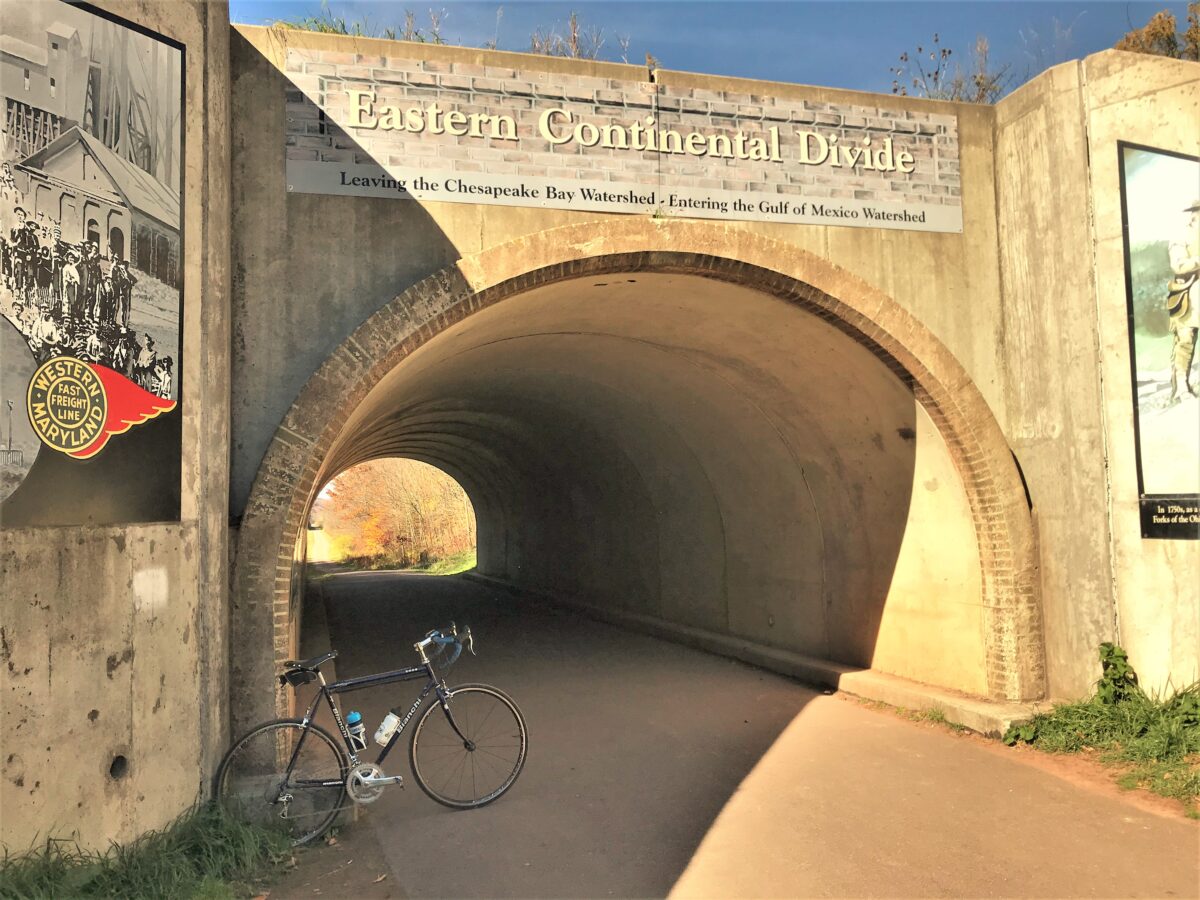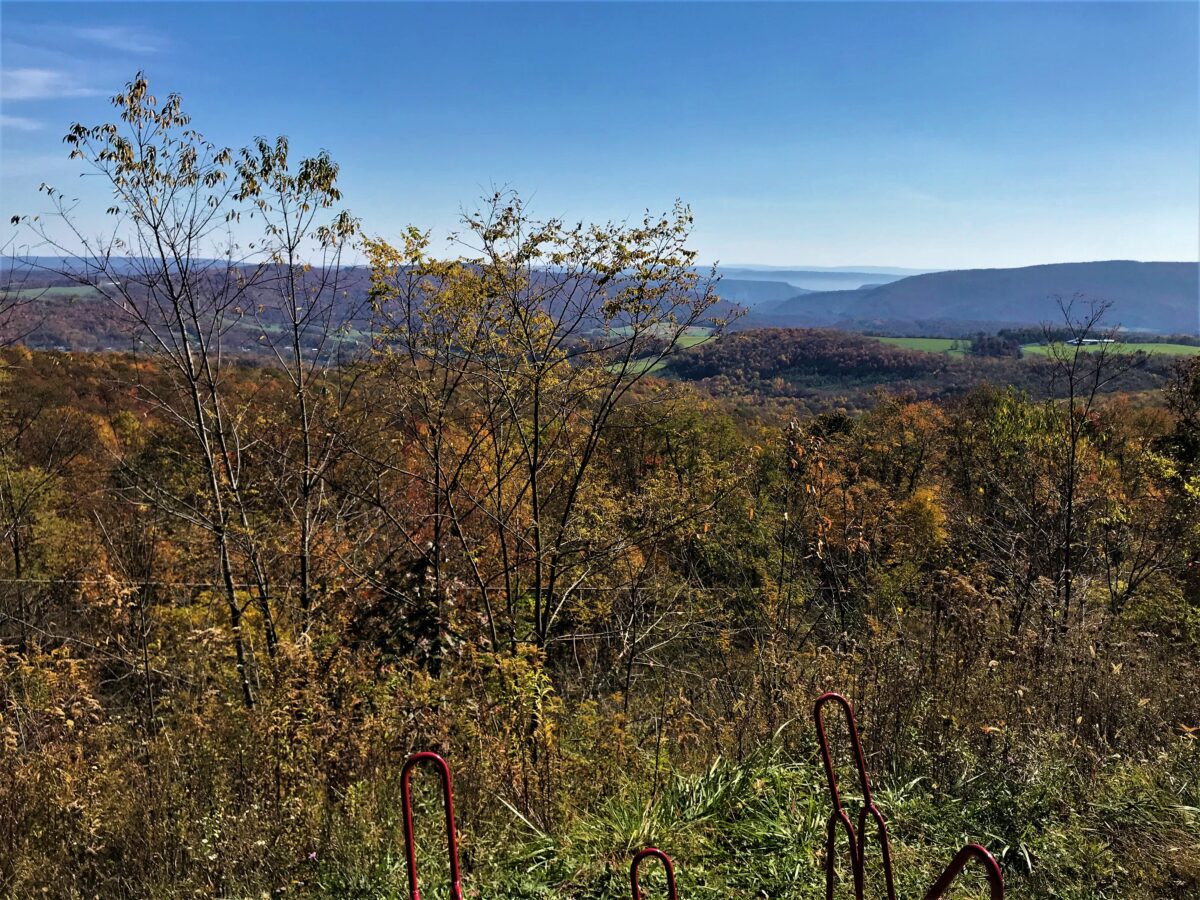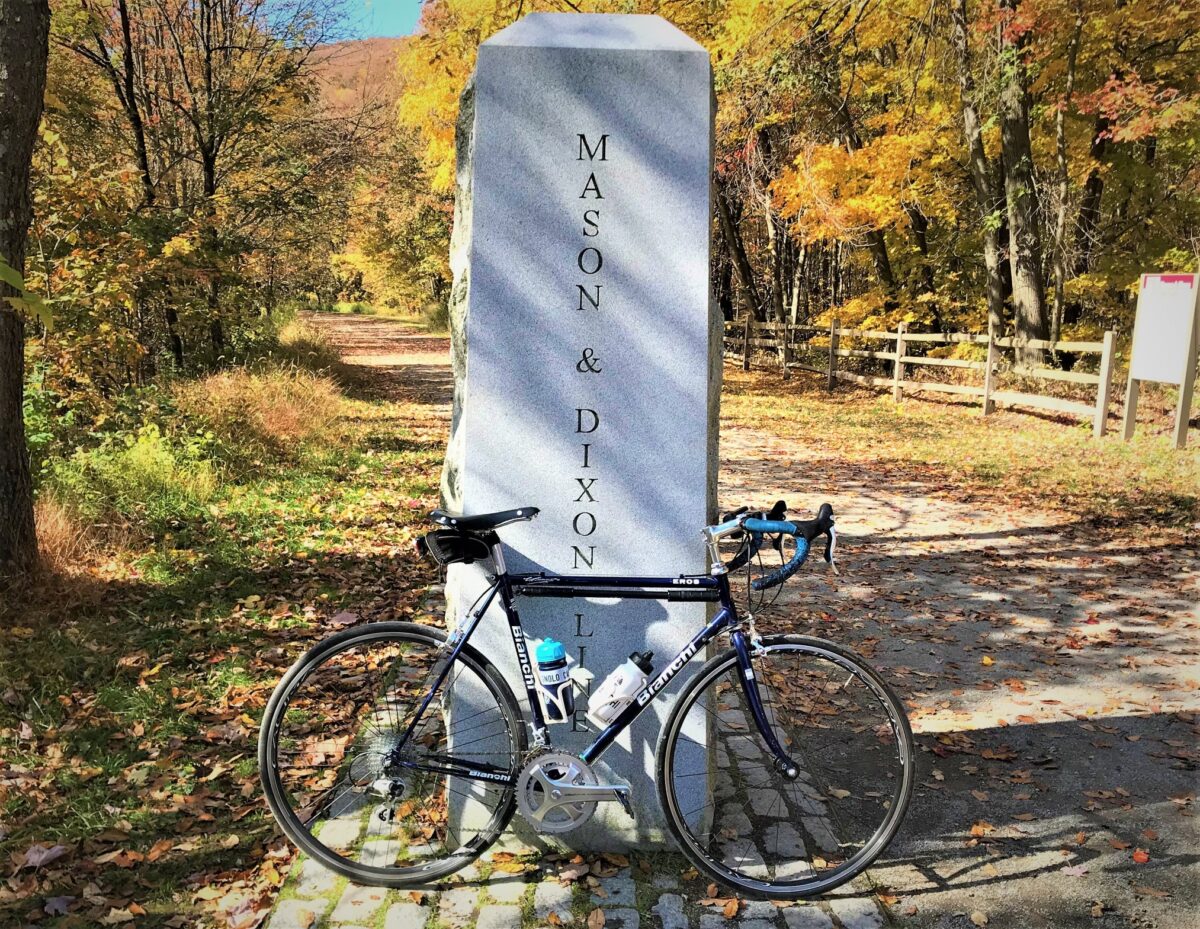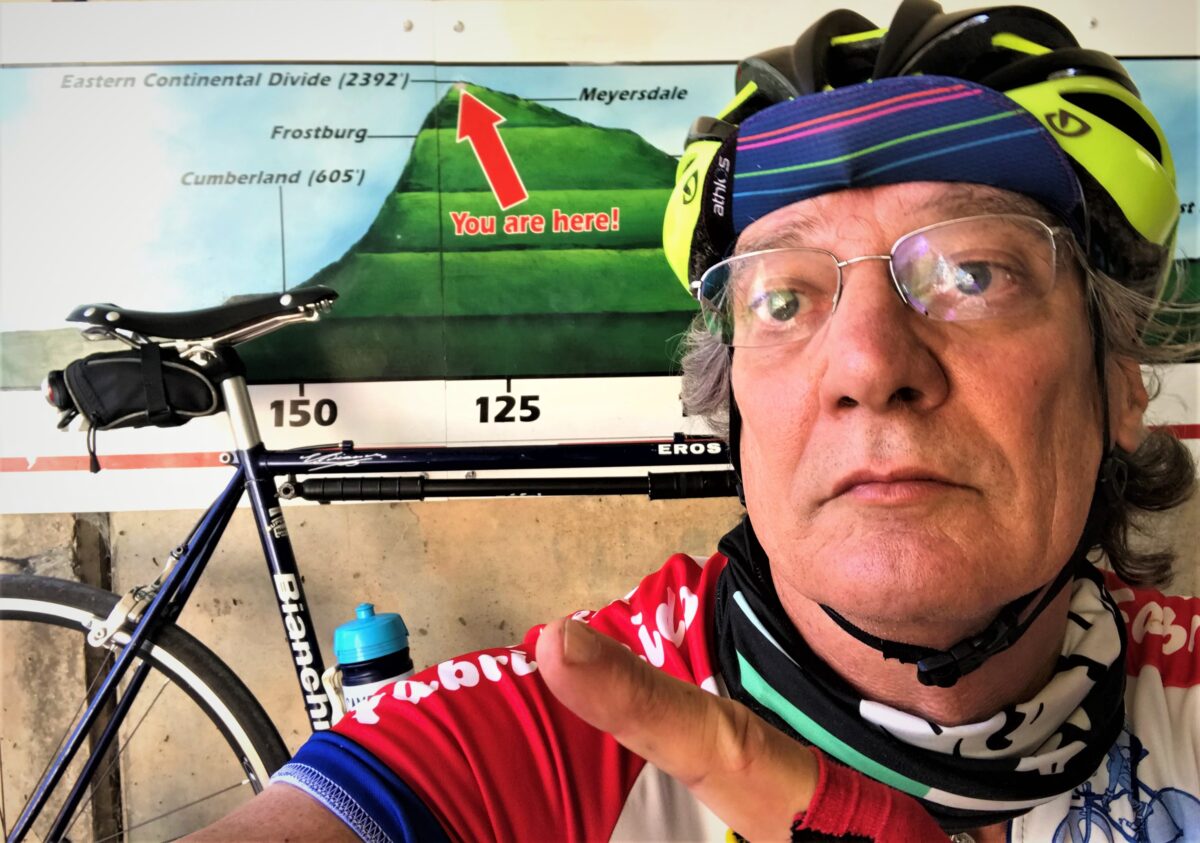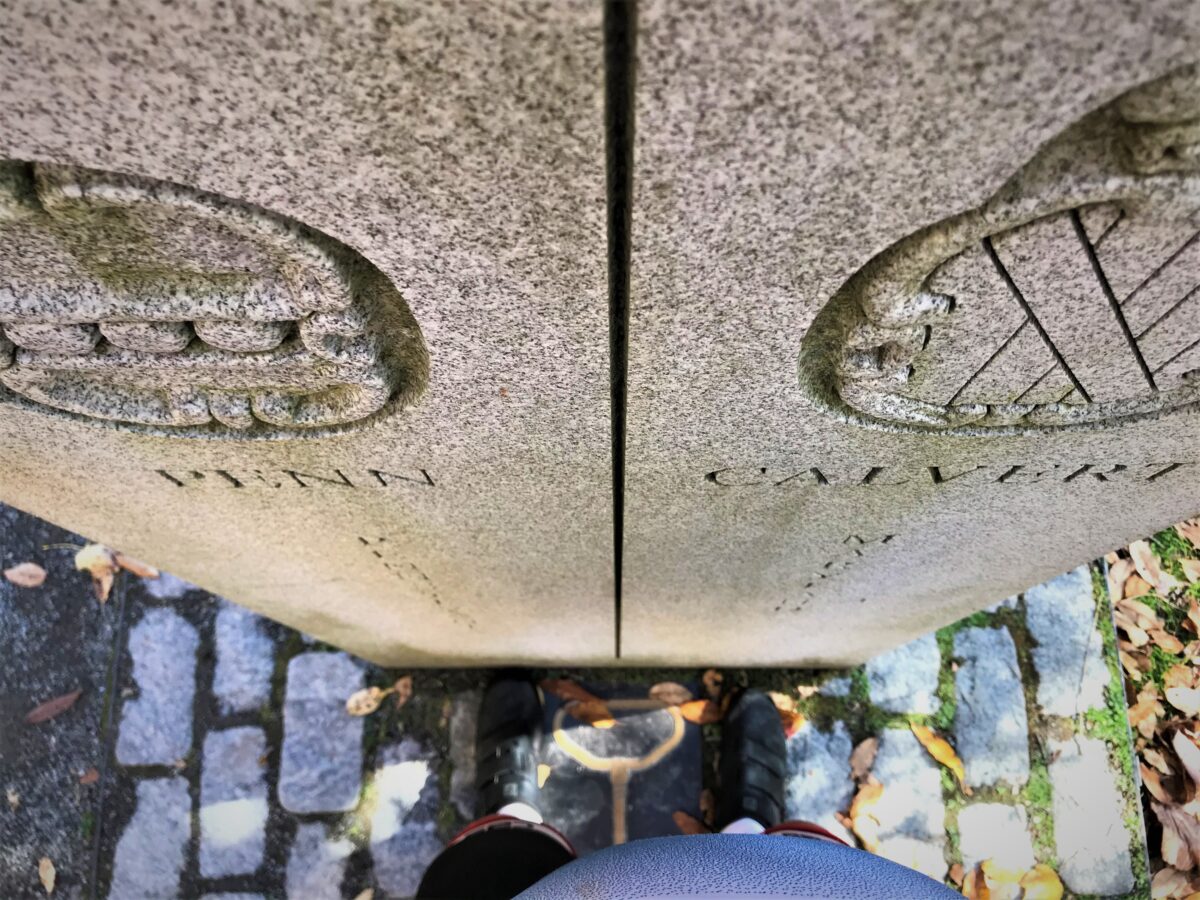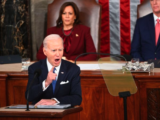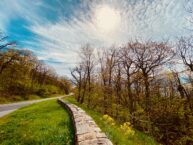Secret Vistas –
By Brooks Boliek –
FROSTBURG, Md. — I have nothing against Charles Mason or Jeremiah Dixon. As a matter of fact, I admire and esteem both men for their scientific contributions and service. Mason and Dixon were both scientists who were asked to resolve a land dispute between Thomas Penn and Fredrick Calvert, the sixth Baron of Baltimore, by demarking the border between the then-British colonies of Pennsylvania and Maryland.
Drawing the line in the 1760s was a Herculean task as an army of men hacked through the wilderness placing a stone marker at every mile. “Crownstones” imported from England were placed every 5 miles. Each Crownstone is etched with An M and Lord Baltimore’s coat of arms demarking the Maryland side and a P and William Penn’s coat of arms designating the Pennsylvania and Delaware side.
While their triumph remains one of the great scientific endeavors of the day, it’s what occurred a couple of centuries later that etched their names in the history books. Masson and Dixon likely never heard their endeavor called the Mason-Dixon Line as the term wasn’t popular until passage of the Missouri Compromise in 1820 that allowed slave-owning Missouri and free Maine to join the Union.
The Dixon part of Mason-Dixon may have been the genesis for the term “Dixie†for the American South, but the British astronomers were long gone by that time. Dixon would have hated that as he was lapsed Quaker who virulently opposed slavery. One story claims he wrested the whip from a slave owner in America to prevent the assault of a black female slave.
The strife surrounding the American Civil War made the Mason-Dixon one of the most famous lines one can find on the globe. The equator, the prime meridian, the Korean DMZ, the Great Continental Divide, maybe more famous, at least in the Northern Hemisphere, but the Mason-Dixon holds its own.
As the geographic, political and spiritual demarcation between the American North and South, between the Union and the Confederacy, it was an important monument for slaves fleeing north to escape bondage. It’s place in the American imagination is secured by the Civil War; the thousands political rallies, dinners and barbeques across the nation; and the various companies named after the British scientists’ crowning endeavor – not to mention a really good song by Mark Knopkler and James Taylor, and a Thomas Pynchon novel.
None of which is the reason why I came to piss all over their work, so, perhaps, it’s best to start at the beginning.
Stupid Cycling Adventures
About two years ago I was looking for my next Stupid Cycling Adventure. I’ve been a serious cyclist since before college, but with kids, work and other life things, I stopped cycling for a few of years. On our 31st anniversary, my wife took my old Bianchi out of mothballs and had Proteus Bicycles get it back on the road. Jeri and I have been serious about cycling. We used to ride a tandem, and even though I stopped riding for a time, she never did.
When she got my old bike fixed up, she didn’t know that she was reopening the cycling vein. Since she got my Bianchi fixed, I’m back to my old habit. I rebuilt Fausta (named after the great Fausto Coppi who rode for Bianchi.) This winter with all-new Campagnolo running gear and wheels, westarted looking for a new Stupid Cycling Adventure.
I’ve done thousands of miles of long-distance cycling. The first of my Stupid Cycling Adventures was the Natchez Trace Century. I was working at the Florence Times-Daily newspaper at the time, and the guys I rode with came up with the ride. It was my first century. I’ve done so many now, I’ve lost count.
When I moved to Washington, D.C., my bike, my feet and Metro were my only transportation. I didn’t own a car for years. It was here that I got seriously stupid about cycling. I rode the DC Randonneurs series twice. I completed the 600 km (370-mile) brevet (ride) in 36 and 34 hours, respectively. This time around, I wanted something stupid, but not that stupid.
Getting to the Point-to-Point
Enter the GAP. Well, sort of. The Great Allegheny Challenge is a 150-mile trail that runs from Cumberland, Maryland to Pittsburgh, Penn. It’s built on old railway beds and the surface is a packed and crushed limestone. While it winds through the Allegheny Mountains, it’s not very steep.
I left running and started serious cycling after high school, because I discovered that no matter how far I ran, I’d never made it to the next town. On a bicycle, I could actually get somewhere. I like starting in one town and riding to another. There’s nothing like going someplace under your own power, and the only way to get anywhere that way is on a bicycle.
There’s only problem with point-to-point rides: Someone has to pick me up when I get to the end point; drop me off at the beginning; or both. As much as Jeri loves me, that doesn’t extend to driving for a couple of hours in one direction so I can get my cycling jollies. She put the kibosh on my GAP plans.
Skyline Drive replaced the GAP as my Stupid Cycling Adventure this year because it was logistically easier.
With the help of my old, dear friend and New American Journal editor and publisher, Glynn Wilson, my Skyline Drive Stupid Cycling Adventure was a success. The Skyline Drive rides I made this summer are some of my best rides, but with Stupid Cycling Adventure 2020 in my rearview mirror, it is time to plan for the next stupidity.
The GAP Bug Bites
Before I could make a new Stupid Cycling Plan, however, Jeri got bit by the GAP Bug. The same GAP she put the kibosh on in 2020 was looking pretty good to her now. She’d read an article in The Washington Post about the ride and started quizzing me about it. She accompanied me on one of the Skyline Drive Stupid Cycling Adventure rides, and, she too, was rediscovering the idiotic joy brought on by such cycle madness. She wants to ride the entire 150-mile trail, stopping every 50 miles or so in one of the towns between Columbia and Pittsburg.
The only real issue facing us on the GAP is the trail’s crushed and packed limestone surface. I’d talked to many of The People Who Know Cycling, and they all talked about the difficulty – the near impossibility – of riding the GAP on a road bike. The People Who Know Cycling claimed the surface was too rough, too sandy, too something to tackle on a road bike. I’d need a mountain bike, a gravel bike, an adventure bike, or some other kind of bike, The People Who Know Cycling explained.
The problem with The People Who Know Cycling is they don’t know what a road bike can do. Especially, an older, high-quality steel bike like Fausta. Yeah, she ain’t that light, and she’s a little stodgy, but I’ve ridden tens of thousands, hell, maybe a hundred thousand miles on a road bike, and they are still the most versatile machines out there. Maybe the “gravel/adventure bike†takes its place in “modern†cycling, but I don’t have an extra grand lying around to buy one. I do have Fausta, and she’s more than willing. I decided to check out the GAP by riding its first 25 miles. The out-and-back makes it a 50-mile mini-adventure.
Reconnoitering the GAP
Like all these things, this one starts early in the morning. To beat DC’s traffic, I set off before dawn for the lovely hamlet of Frostburg. The fog is so heavy it feels like a bit more than a mist and a bit less than a rain. Facing the two-and-half-hour drive to Frostburg, I nearly pack it in, but in think: “What the hell. I’ll go and at least look at it.â€
Driving through the fog, climbing up one of those mountains on I-68, I nearly run off the Interstate staring at what should be the valley floor. Only, I see no valley floor. The higher mountain peaks punch through the fog, but the valley can’t be seen. You can hide an army down there in that fog. The view is so spectacular that, by itself, it makes the trip nearly worth it.
At the Frostburg entrance to the GAP, the fog is stubbornly sticking around. It doesn’t feel too bad, though, so I head south towards the trail’s beginning in Cumberland. I plan to ride to the start, turn and ride back until I cover about 50 miles total. By then, I’d know what we were facing for the Stupid Cycling Adventure 2021.
The surface takes a little getting used to. I have a lot of experience driving off road, so I know a little about navigating marginal surfaces. I slam on the brakes a few times to test it out. Fausta stays straight and true, although we do slide quite a bit more than on pavement. I also have to moderate my steering input. No fast turns here, just a firm gentle push on the handlebar and Fausta goes where we need to go, just like she always does.
A Brush With Phone Panic
I ride south to the Brush Tunnel, marveling at my speed and the ease I float down the trail. I get to the tunnel, and see what a fantastic photo I can get. Posing Fausta in an enticing way, leaning jauntily on some road furniture, she is silhouetted perfectly by the tunnel. It doesn’t get any better than this. Maybe the picture is good enough to make a Global Cycling Network Inspiration photo.
I reach into my jersey pocket for my phone. It is not there! Maybe in another pocket. Holy Shit! My phone is gone! The Phone Panic hits, hard. I flip Fausta around and start maniacally pedaling north, scanning the trail for my phone.
I now discover the reason for my ease in heading south. It is downhill. Now, that I am heading uphill – albeit not much of an uphill – it begins to tell on my legs. Riding uphill with the Phone Panic adrenaline coursing through my veins, I curse the trail for reminding me of the truly stupid adventure I am on. I vow to head home immediately, even if my phone is in my truck. Suddenly this good idea for a Stupid Cycling Adventure just seems stupid. Fortunately, my phone safe in its cradle its cradle inside my truck.
Back in the Saddle Again
After a brief repast, phone safely in pocket, I decide that maybe I should give the GAP a second chance. This morning’s fog is but a memory. There may have been a more beautiful day in Maryland, but I don’t know when. I saddle up. Fausta and I head north toward the Eastern Continental Divide. Even though it is uphill, it’s pretty easy, and we manage a steady pace something above the GAP’s 15-mph speed limit. Recovering from the Phone Panic, I start to get into the ride.
There are sections where there is nobody, and civilization feels a million miles away. The sunlight flashes through the trees. The breeze flows by. I am hypnotized. The world, COVID-19, the idiocy and corruption of the current administration, the bills piling up – they all evaporate with the fog. Now it’s just me and Fausta and the GAP.
The Eastern Continental Divide isn’t as famous as its Rocky Mountain brother, but it is where the waters divide in the Eastern United States. I had always heard that you could pee on the Great Continental Divide and half of your urine would flow west and half east. Riding north on the GAP, that urge is building. I know I’m going to have to go somewhere, so I decided to put this experiment to the test, only on the Eastern Continental Divide. Before I could make my experiment, however, Fausta and I will ride through the 957-foot long Borden Tunnel; cross the Mason-Dixon Line; and ride through the 3,294-foot long Big Savage Tunnel.
Our tires make a constant crunching sound on the limestone. They hiss so much as they pass over the leaves I keep thinking I’ve punctured. I keep an eye out for big rocks, deep sand or other obstacles. Every once in a while, massive wind turbines poke out of the mountains – strange, beautiful, foreign beasts with slowly twisting, turning heads that make a muffled mechanical sound.
Hold on…
There is only one problem with my pee experiment. I can’t hold it.
I misread the mileage at Frostburg. I think the divide is at mile 19. Zipping by the marker there is nothing announcing the auspicious place. I dismiss it, thinking rightly, that I’d gotten the mileage wrong.
We ride on, but the urge continues to creep up on me. With every pedal stroke, my body says two things: Number One, I need to drink some water; and Number Two, I have to go number one really, really bad.
I spot the markers for the Mason-Dixon Line. As much as I’ve contemplated the history surrounding the Mason-Dixon, I wasn’t thinking of it at the start. But, as we wheel up to the stones that spell out the famous names, memories and the urge flood in.
This is one of the most famous lines in the history of the world, much more famous than the Eastern Continental Divide. I mentioned the Eastern Continental Divide on social media and a friend from the Western United States said she’d never heard of it, adding that it makes since that there is one. She did know of the Mason-Dixon though, and, yes, she said she did pee on the Great Continental Divide.
We stop. I look at the Kingstone marker. I wonder what the world was like when Mason and Dixon where hacking their way through a wilderness. I whizz like a wild man.
It should be noted, that Mason and Dixon did considerable research on gravity, meaning my Eastern Continental Divide experiment would have been in their considerable spirit. Now, at the work that made them immortal, my effluent – pulled by the very force of the Earth – heads to the Chesapeake Bay and the Atlantic. Relieved of my burden, we continue north, toward the big Savage Tunnel and the Eastern Continental Divide.
Spine of the East
Massive doors close off The Big Savage Tunnel in the winter, but they are open now, and we sail right through. It’s eerie riding through the center of a mountain for nearly three-quarters of a mile. It’s cold, it’s silent and it’s hard to see. The hairs stand out on the back of my neck as I think about the tons of rock that surround me. It is fun, because it is strange.
Once through Big Savage it’s onward and upward. The trail itself is beautiful, but it’s not like Skyline Drive where there’s one great view after another. It’s a different feeling. Fausta and I are enveloped by a sylvan forest. The trees form their own kind of tunnel.
The Eastern Continental divide is a popular spot. The trail goes through a short tunnel here. And people hang around taking pictures. Turns out here is no place here for me to do my aqueous
experiment without engendering a Jeffery Toobin situation. Luckily for me the Mason-Dixon was less popular.
As I mess around at the Eastern Continental Divide, a couple around my age ride up on E-bikes. (I generally consider E-bikes an abomination against cycling, but I make an exception here.) They are GAP through riders, and he wants a very specific picture with them holding hands as they cross the divide. It takes a couple of tries, but I get the shot: Two people going through the tunnel on bikes, holding hands as they scale a modest apogee marking one of life’s little triumphs.
Fausta and I ride on, stopping at a beautiful stream near Deal. There are signs around the stream that say fishing is allowed by permission of the land owner. It’s cool that the owner lets people fish here. I can’t see any fish, but the rippling brook looks like a pretty good trout stream.
At the Deal creek, it is time to turn around. Fausta and I wanted to go on, but we know a two-and-a-half hour drive awaits us back to Frostburg. I want to beat DC’s rush hour, so we start back.
We Are the Centaur
Now, the GAP really shows its best light. We crossed the trail’s highest point at the Eastern Continental Divide, so it was all downhill. It wasn’t like coming down the mountains on Skyline Drive. There are no 30 MPH-plus descents, but there are no automobiles either.
The views, at least on this part of the GAP, aren’t as spectacular as Skyline, but it is cycling for cycling’s sake. I’m unworried that some idiot who thinks he’s the next Mario Andretti will scream by me on a blind curve, or some cowboy-wannabe in a dually pickup and 30-foot trailer will sideswipe Fausta and I into oblivion.
No, not here. On this part of the GAP it’s pure cycling. Each pedal stroke means something. We never coast. We never brake. We never stop pedaling. My body is pure engine. Fausta ceases to be a machine. We are a centaur.
The trail’s limestone makes its crunching sound. The leaves make their hiss. The wind rushes by. The sun dapples through the trees.
Sometimes the trail gets a little squirrelly, but never anything scary. Fausta’s rear wheel slips out just a little here and there, left and right. A gentle push brings her butt back in, and she gathers herself up, composure restored. We keep heading down the mountain.
We could’ve gone faster. We could’ve crashed. We ignore the GAP’s 15 mph speed limit. We are in a rhythm. Cycling’s beauty, power and grace are bestowed on us. To slow down is a crime against art.
I miss the Frostburg parking lot. I squeeze the brake levers, just a bit too hard. Fausta does her little dance, and we stop. The dust blows past. We are done. The spell is broken. Centaur no more.
I can’t contain myself. To whoever is listening, or whoever isn’t, I shout: “Man, what a ride! What a freakin’ ride!â€
So next year’s Stupid Cycling Adventure began this year. In 2021, COVID allowing, Jeri and her bike, me and Fausta bridge the GAP next year. Mason and Dixon be warned.
More Photos
Before you continue, I’d like to ask if you could support our independent journalism as we head into one of the most critical news periods of our time in 2024.
The New American Journal is deeply dedicated to uncovering the escalating threats to our democracy and holding those in power accountable. With a turbulent presidential race and the possibility of an even more extreme Trump presidency on the horizon, the need for independent, credible journalism that emphasizes the importance of the upcoming election for our nation and planet has never been greater.
However, a small group of billionaire owners control a significant portion of the information that reaches the public. We are different. We don’t have a billionaire owner or shareholders. Our journalism is created to serve the public interest, not to generate profit. Unlike much of the U.S. media, which often falls into the trap of false equivalence in the name of neutrality, we strive to highlight the lies of powerful individuals and institutions, showing how misinformation and demagoguery can harm democracy.
Our journalists provide context, investigate, and bring to light the critical stories of our time, from election integrity threats to the worsening climate crisis and complex international conflicts. As a news organization with a strong voice, we offer a unique, outsider perspective that is often missing in American media.
Thanks to our unique reader-supported model, you can access the New American journal without encountering a paywall. This is possible because of readers like you. Your support keeps us independent, free from external influences, and accessible to everyone, regardless of their ability to pay for news.
Please help if you can.
American journalists need your help more than ever as forces amass against the free press and democracy itself. We must not let the crypto-fascists and the AI bots take over.
See the latest GoFundMe campaign here or click on this image.
Don't forget to listen to the new song and video.
Just because we are not featured on cable TV news talk shows, or TikTok videos, does not mean we are not getting out there in search engines and social media sites. We consistently get over a million hits a month.
Click to Advertise Here


